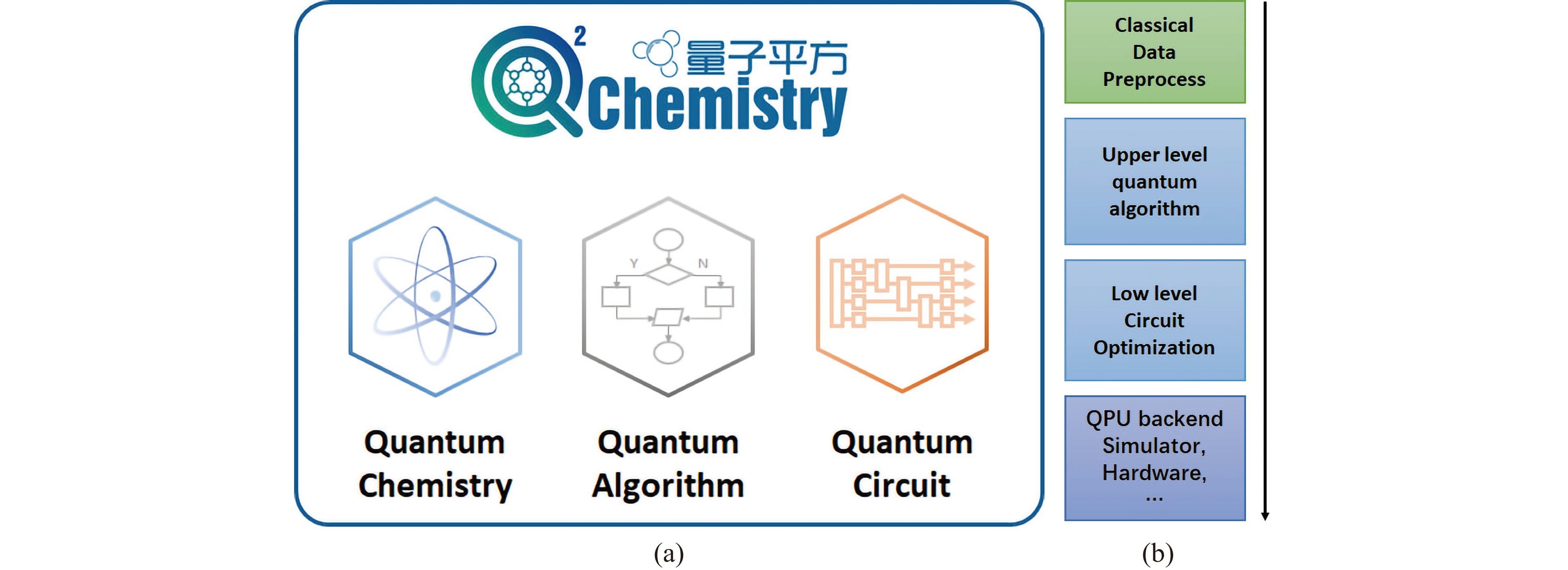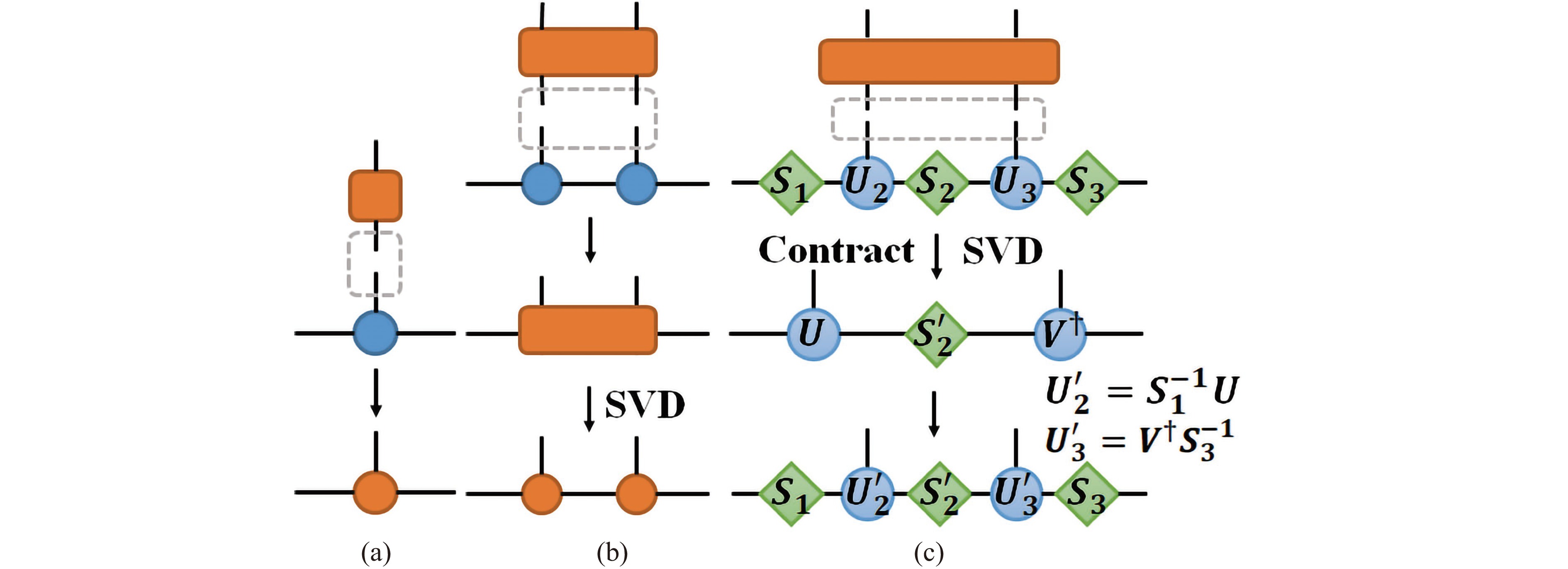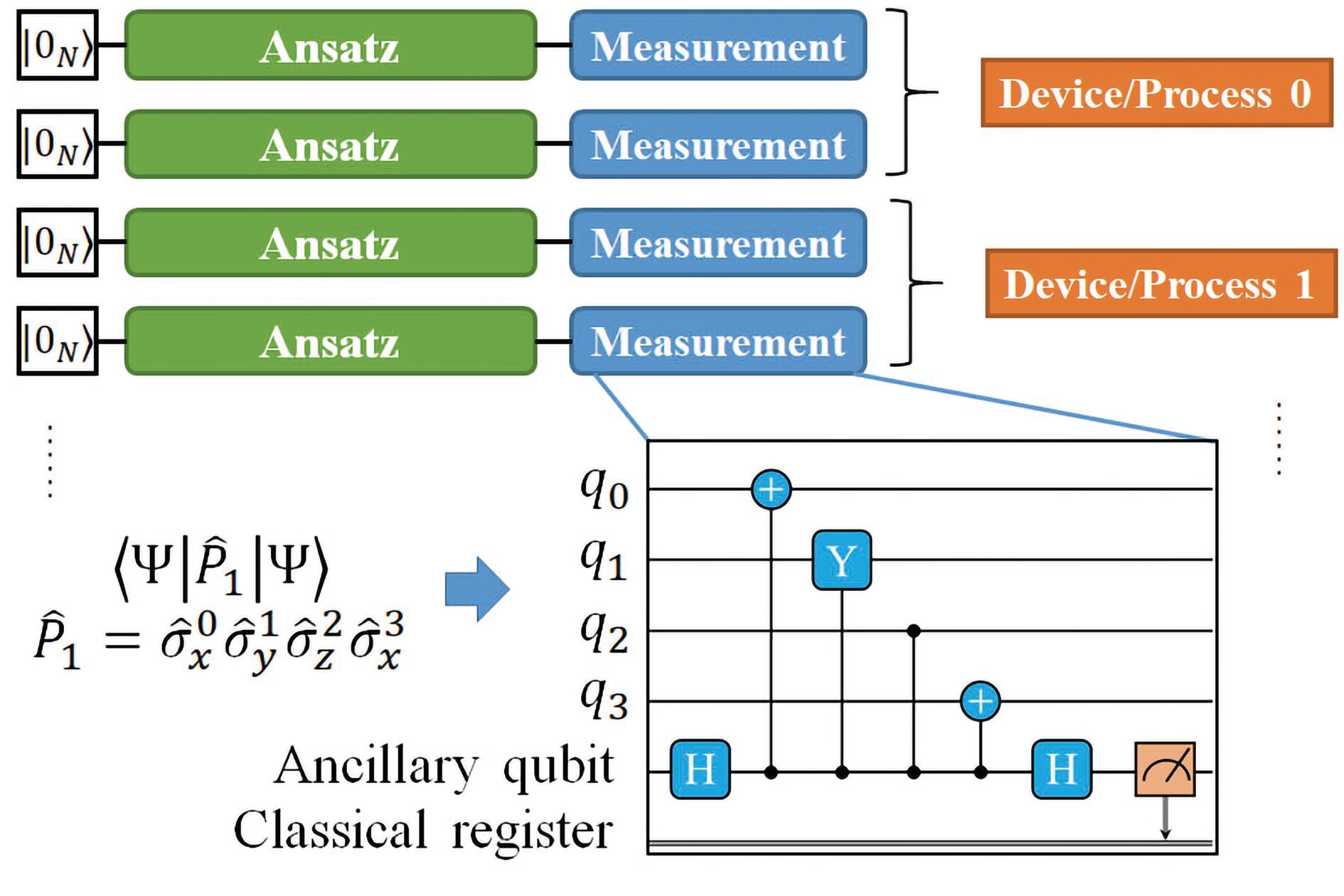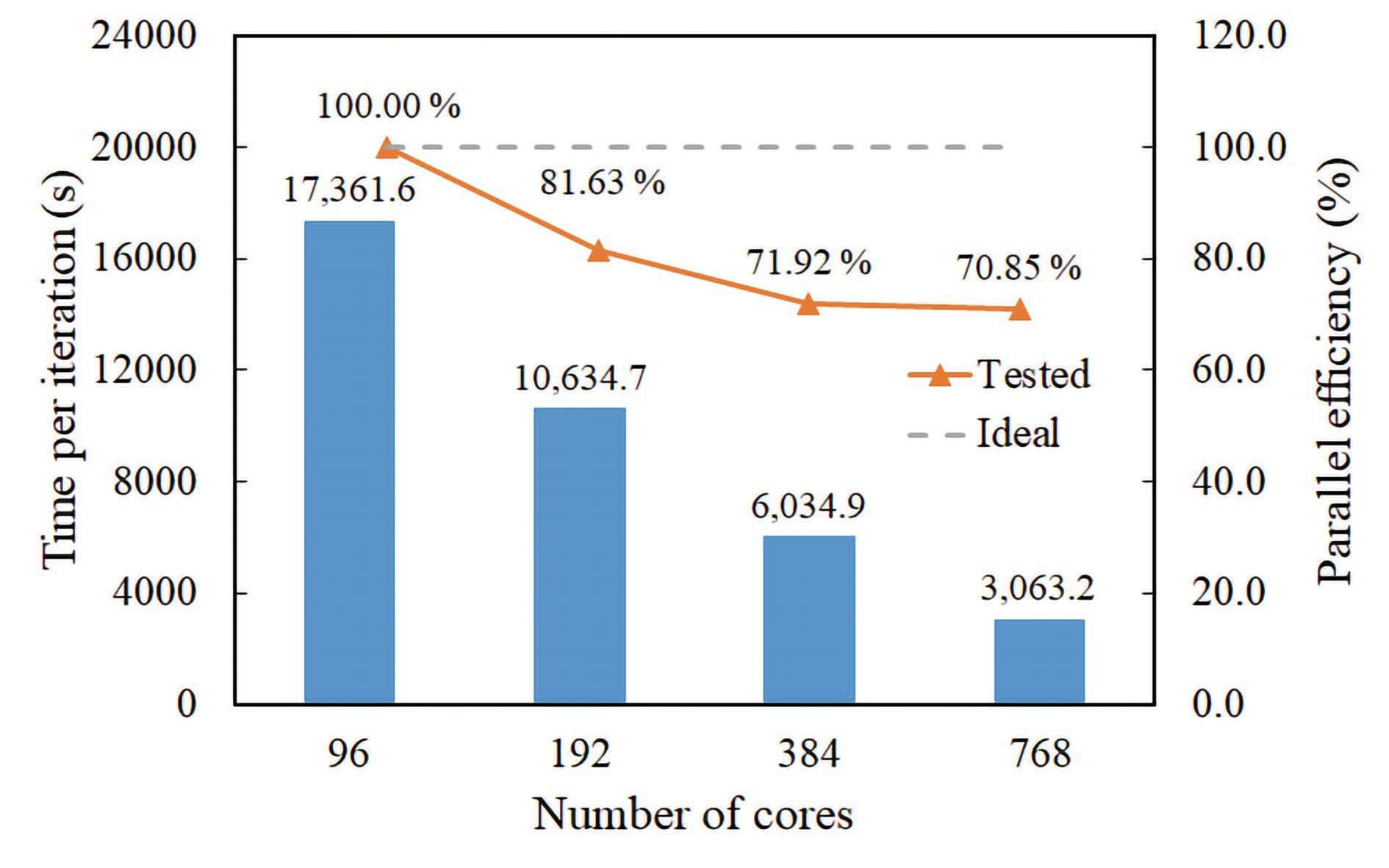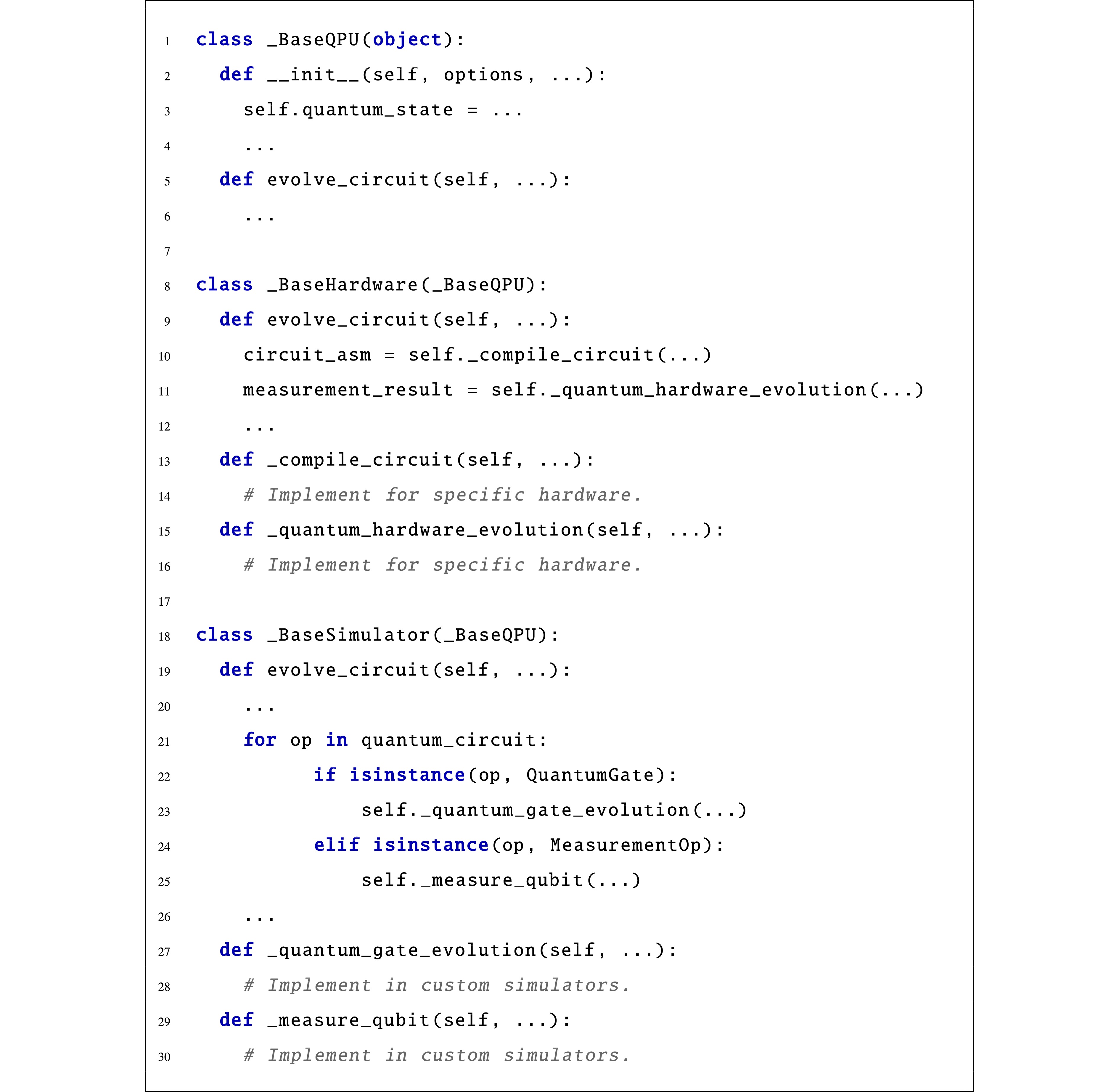Figures of the Article
-
![]() (a) The framework of Q2Chemistry. (b) A typical workflow of solving a chemical problem using a quantum algorithm.
(a) The framework of Q2Chemistry. (b) A typical workflow of solving a chemical problem using a quantum algorithm.
-
![]() (a) Applying a single qubit gate on the MPS quantum state is simulated by simply a local contraction. (b) Applying a two-qubit gate on neighboring qubits generally has 2 steps: (i) reshape the two-qubit gate into a 4-dimensional tensor and contract with the qubits to form a two-qubit tensor; (ii) perform a singular value decomposition to restore the two-qubit tensor back to the MPS formulation. Postprocessing is usually required to maintain normalization or canonicalization of MPS tensors. (c) Auxiliary matrices that contain truncated and normalized singular values are used to normalize the quantum state.
(a) Applying a single qubit gate on the MPS quantum state is simulated by simply a local contraction. (b) Applying a two-qubit gate on neighboring qubits generally has 2 steps: (i) reshape the two-qubit gate into a 4-dimensional tensor and contract with the qubits to form a two-qubit tensor; (ii) perform a singular value decomposition to restore the two-qubit tensor back to the MPS formulation. Postprocessing is usually required to maintain normalization or canonicalization of MPS tensors. (c) Auxiliary matrices that contain truncated and normalized singular values are used to normalize the quantum state.
-
![]() (a) The quantum circuit corresponding to the operator
(a) The quantum circuit corresponding to the operator exp(iθ^σx^σy^σz^σx) and (b) the two-layer HEA circuit that entangles all neighboring qubits using the controlled-U gate. Blue squares represent nonparametric gates, while green squares represent parametric quantum gates such as Rz and the three-parameter (controlled-)U gate. -
![]() Evaluating the expectation value of a linear combination of Pauli strings using multiple quantum devices or simulator processes.
Evaluating the expectation value of a linear combination of Pauli strings using multiple quantum devices or simulator processes. |0N⟩ represents anN -qubit quantum register with all qubits initialized to|0⟩ . In this example, the measurement parts are the Hadamard test circuits. -
![]() Simulating the Cr
Simulating the Cr2 molecule using the MPS backend. The STO-3G basis set and the symmetry-reduced UCCSD ansatz are used, where the qubit Hamiltonian contains 305041 Pauli strings. The time cost refers to one VQE iteration (including evolution of the quantum circuit and calculation of energy) being tested. The distributed parallelization is implemented using OpenMPI and Python’smpi4py package. -
![]() (a) The VQE optimized potential energy curve of H
(a) The VQE optimized potential energy curve of H2 calculated by the MPS backend using the ccJ-pVDZ basis set. The VQE results are calculated by interfacing with the external Julia-implemented MPS simulator. (b) Energy difference between EOM-ADAPT-C and classical EOM-CCSD band structures for Si. Inset gives the EOM-ADAPT-C band structure calculated using Q2Chemistry. The FCI and EOM-CCSD energies are obtained using the PySCF code. -
![]() Code Example 1. Interface to quantum devices in the qcircuit module.
Code Example 1. Interface to quantum devices in the qcircuit module.
Related articles
-
2024, 54(7): 0704. DOI: 10.52396/JUSTC-2023-0155
-
2022, 52(8): 1-1-1-6. DOI: 10.52396/JUSTC-2022-0037
-
2022, 52(7): 2-1-2-11. DOI: 10.52396/JUSTC-2022-0004
-
2020, 50(6): 811-818. DOI: 10.3969/j.issn.0253-2778.2020.06.013
-
2019, 49(1): 79-86. DOI: 10.3969/j.issn.0253-2778.2019.01.011
-
2018, 48(8): 649-654. DOI: 10.3969/j.issn.0253-2778.2018.08.008
-
2018, 48(5): 374-377. DOI: 10.3969/j.issn.0253-2778.2018.05.005
-
Entangled state representation for mesoscopic persistent current ring and its phase-angular momentum2016, 46(8): 652-656. DOI: 10.3969/j.issn.0253-2778.2016.08.005
-
2014, 44(10): 839-843. DOI: 10.3969/j.issn.0253-2778.2014.10.007
-
2013, 43(5): 379-386. DOI: 10.3969/j.issn.0253-2778.2013.05.005



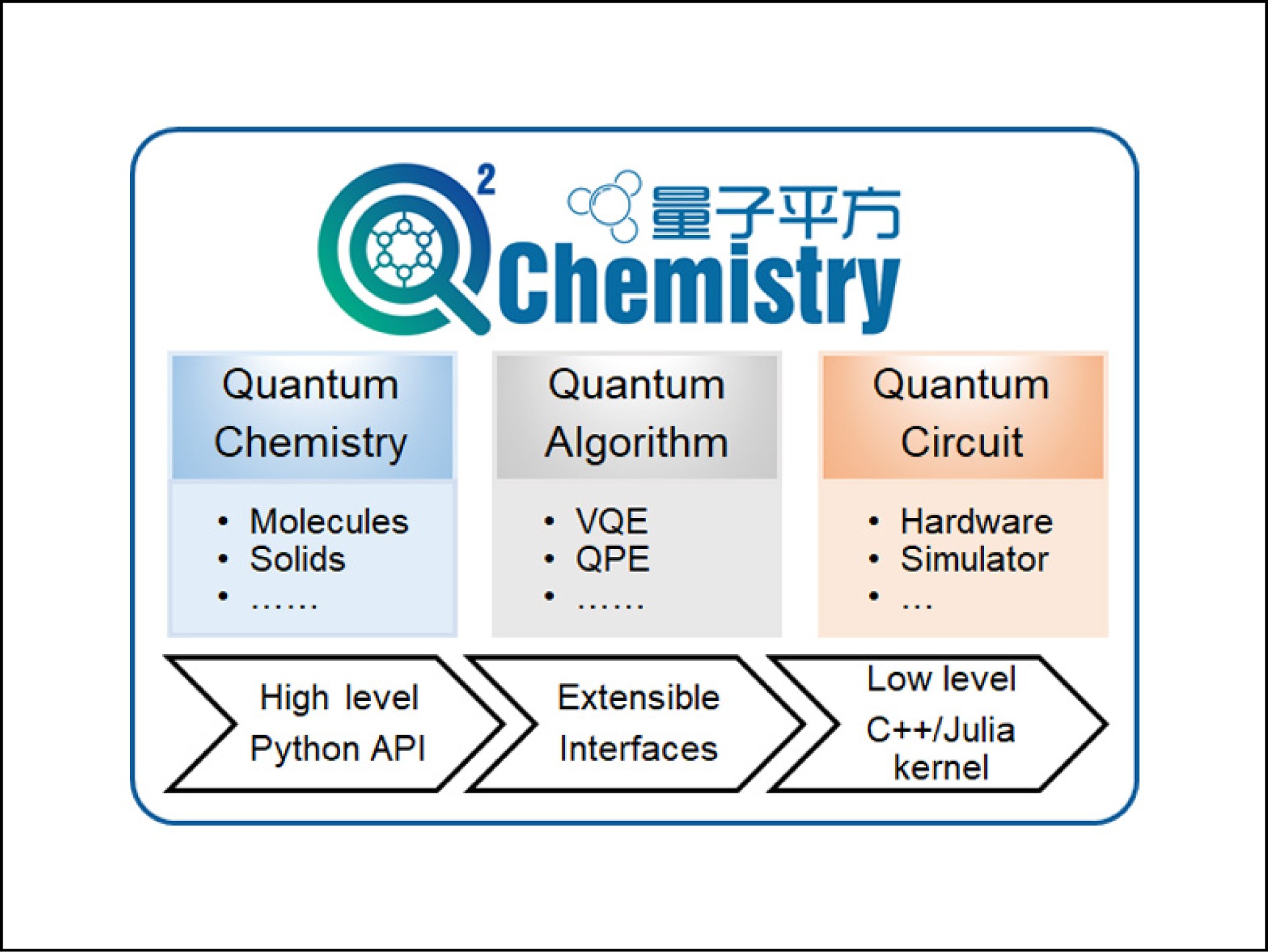
 Download:
Download:
